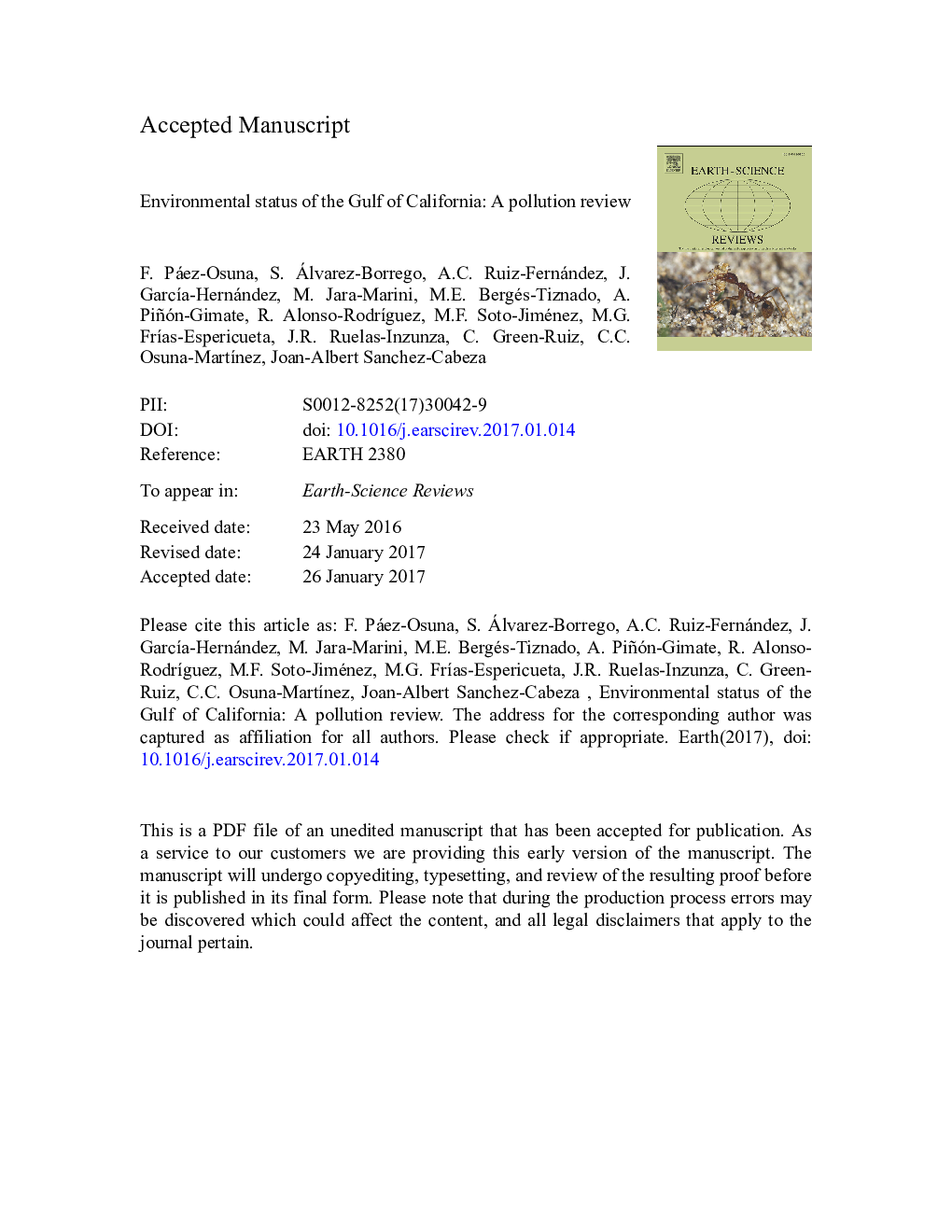| Article ID | Journal | Published Year | Pages | File Type |
|---|---|---|---|---|
| 5785161 | Earth-Science Reviews | 2017 | 116 Pages |
Abstract
The Gulf of California (GC) is an unique large ecosystem characterized by its rich biodiversity, high biological productivity and endemism of marine life. However, as many other large ecosystems worldwide, it is subject to diverse anthropogenic pressures (overfishing, climate change, losses of biodiversity and habitats, and pollution). We reviewed over 150 studies dealing with contaminants in water, sediments and representative organisms from the GC, and here we discuss the main issues associated to the presence of metals, metalloids, persistent organic pollutants (POPs, including polycyclic aromatic hydrocarbons (PAHs), polychlorinated biphenyls (PCBs), brominated diphenyl ethers (deca tri-a) (PBDEs), and several other pesticides), plastics, nutrients and algal blooms. The GC ecosystems have been subject to a wide range of pollution sources. Nevertheless, the pollution levels remain relatively low to moderate depending on the location and contaminant type. Contamination hotspots are found i) for metals and metalloids, in sites where mining spills have occurred and ii) for nutrients and pesticides, in wetlands that receive discharges from intensive agricultural and shrimp farming. We also identified sites where harmful algal blooms (HABs) have been observed. However, numerous coastal environments in GC, affected by pollution sources and events have yet been poorly studied. More detailed, extensive and comprehensive studies on the pollution levels and trends, transfer and toxic effects are still needed.
Keywords
Related Topics
Physical Sciences and Engineering
Earth and Planetary Sciences
Geology
Authors
Federico Páez-Osuna, Saúl Álvarez-Borrego, Ana Carolina Ruiz-Fernández, Jacqueline GarcÃa-Hernández, MartÃn Enrique Jara-Marini, Magdalena Elizabeth Bergés-Tiznado, Alejandra Piñón-Gimate, Rosalba Alonso-RodrÃguez,
